77 F. high temperature in the Twin Cities Thursday.
83 F. average high on July 28.
84 F. high on July 28, 2015.
July 29, 1917: The hottest temperature ever recorded in Minnesota, 114.5 degrees, occurs at Beardsley.
July 29, 1849:
Severe storms hit the newly constructed post of Ft. Ripley between 3
and 5 AM. W.J. Frazier, Head Surgeon notes: 'Rain and hail with much
thunder and lightning and very high winds breaking many trees.'
 Cool Canadian Breeze - Hot "American Air" Next Week
Cool Canadian Breeze - Hot "American Air" Next WeekA
hype-happy national media talking about weather is like watching an
excitable puppy with a new toy. Think about it: polar vortex, heat
domes, now "corn sweat"? When in doubt make stuff up.
I am guilty
of routinely disparaging Canada and I take full responsibility for my
transgressions. Much of the winter we talk about "Canadian air" as a
pejorative, a diss. I wonder if TV meteorologists in Winnipeg or Toronto
complain about hot, sweaty "American air" moving in?
I should get a research grant and study that for 10 years.
Today
I just can't get enough of a fresh breeze from Ontario; high near 80F
with a very comfortable dew point in the 50s. And no obnoxious red blobs
on Doppler, capable of chasing you indoors. A taste of September.
Temperatures
over the weekend should be warm enough for the lake or pool - another
wave of antiperspirant heat pushes the mercury into the low 90s
Tuesday and
Wednesday next week. More severe T-storms may sprout as early as
Monday.
If anyone asks Minnesota's mosquito season is 34 days longer now than it was in the 1980s. The welcome details below.
Mosquito Season Growing Longer.
Longer growing season - longer boating season - more time for
mosquitoes to breed. 34 days longer since the 1980s? Good grief. Here's
an excerpt from
Climate Central: "...
Climate
Central analyzed how the number of days each year with ideal conditions
for mosquitoes has been changing since 1980. We found that most major
cities in the country (76 percent) have seen an overall increase in days
conducive for mosquitoes in the past 36 years, and many regions have
seen the mosquito season increase by half a month or more. Among the 200
largest metro areas in the U.S., 10 cities have seen their seasons grow
by a month or more over this relatively short period of time. Overall,
125 cities are now seeing their average annual mosquito seasons at least
five days longer than they were in the 1980s..."
Slow Warming Trend.
Today will be the most comfortable day in sight; afternoon temperatures
in the 70s with a dew point in the 50s. Temperatures mellow over the
weekend; NOAA models hint at 90s by the middle of next week. Model
ensemble above: Aeris Enterprise.
Sweating Under The Heat Dome. It could be worse - you could be living in Houston. Here's an excerpt of an Op-Ed at
The New York Times: "...
First,
most conventional wisdom is useless. Yes, you might feel a little
cooler if you wear linen and cotton instead of polyester, along with a
ridiculous “S.P.F.” sun hat. (Really, is there any other kind?) As for
those sunscreens that promise to keep you cool, they do so for the five
seconds you’re spraying them on. When it comes to bugs, torches dipped
in citronella fuel might keep your patio marginally pest free, but at
the expense of warming yourself near, well, a fire. So often,
self-protection in summer comes down to a choice of which feels less
nasty on the skin: sunscreen or bug repellent..."
The World's Biggest, Fastest Firefighting Jet Is About to Take Off. We're going to need a bigger plane. Here's a clip from
eenews.net: "
On
May 5, a big, red-and-white Boeing 747 made a low pass over the airport
here and then dropped about 10,000 gallons of water, shrouding a nearby
field in mist as a crowd including the state's governor, a phalanx of
local politicians and Forest Service representatives looked on. The
plane, a converted former passenger jet, is about to enter service here
as the biggest and fastest airborne firefighting jet in the world. It is
capable of reaching almost any wildfire in the West in about three
hours. Onlookers were excited about the plane's 19,200-gallon capacity
for carrying fire retardant, but less interested in its national reach.
Many of them were more focused on the ugly experiences they've had right
here with fast-spreading wildfires..."
Photo credit: "
The
Waldo Canyon Fire northwest of Colorado Springs, Colo., in June 2012
caused nearly $454 million in damage and was the state's most
destructive fire -- until the Black Forest Fire surpassed it a year
later. Scientists say climate change is helping to fuel forest fires."
Photo by the Department of Agriculture, courtesy of Wikipedia.
Why The Ocean Is Warmer Than Usual And Could Stay That Way For A While. Here's an excerpt of a story at
California's East Bay Times: "...
The
El Nino pattern heating up our ocean has been a semi-regular visitor to
this region far longer than the phrase "global warming." But this
particular El Nino -- now in its third summer -- is more profound, and
sticking around longer, than previous El Ninos. Just as hurricanes have
become more frequent and more severe, this El Nino might be as big and
gnarly as it is because of climate change.
Whatever the cause, the warm ocean temperatures are changing the
definition of "normal" when it comes to the area's fish, mammals and
birds..." (Image credit: earth.nullschool.net).
Forecast First: Warmer Temps Favored Across Entire U.S. And no, we can't thank or blame El Nino this time around; here's the intro to a story at
Climate Central: "
For the next three months, above-normal temperatures
are favored across the U.S., from coast to coast and Mexico to Canada,
as well as Alaska, according to government forecasts. In archives that
go back to 1995, that’s never happened, Dan Collins, a forecaster with
the National Oceanic and Atmospheric Administration’s Climate Prediction
Center, said. While it doesn’t mean that a three-month-long heat wave
is in store, or that there won’t be cooler spells here and there, it
does up the odds that 2016 will rank among the hottest years on record
for the country. It’s also a mark of the overall warming trend, courtesy of heat-trapping greenhouse gases accumulating in the atmosphere..." Map credit:
NOAA
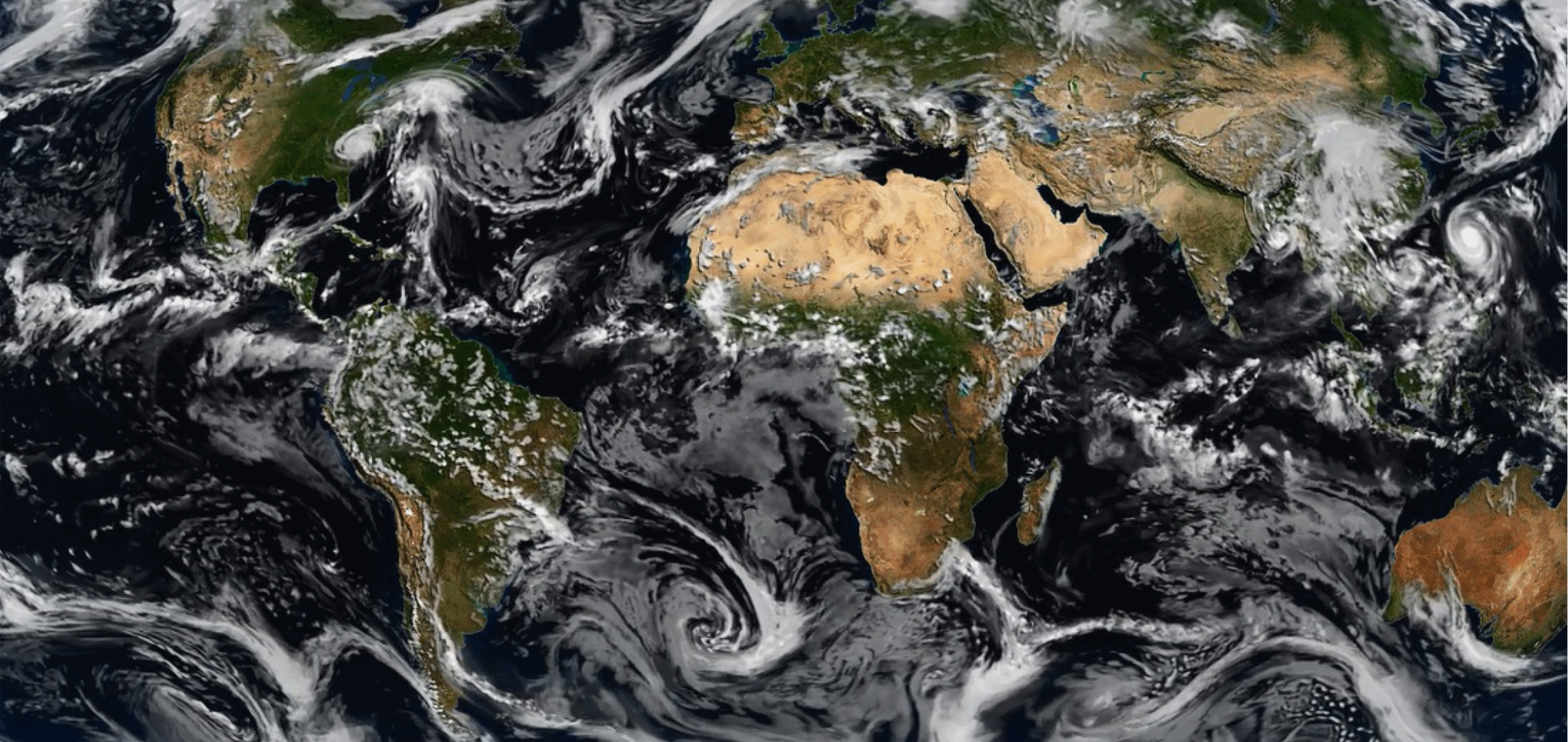 NOAA to Develop New Global Weather Model
NOAA to Develop New Global Weather Model. Here's are a few excerps of a press release from
NOAA: "
NOAA
took a significant step toward building the world’s best global weather
model today, a priority for the agency and the nation. NOAA announced
the selection of a new dynamic core, the engine of a numerical weather
prediction model, and will begin developing a state-of-the-art global
weather forecasting model to replace the U.S. Global Forecast System
(GFS)....The new dynamic core, Finite-Volume on a Cubed-Sphere (FV3), was developed by NOAA’s Geophysical Fluid Dynamics Laboratory
in Princeton, New Jersey. The FV3 core brings a new level of accuracy
and numeric efficiency to the model’s representation of atmospheric
processes such as air motions. This makes possible simulations of clouds
and storms, at resolutions not yet used in an operational global model..." (Image credit: NOAA).
Slimy Green Beaches May Be Florida's New Normal.
National Geographic reports; here's a snippet: "...
This is absolutely the worst,” says Evan Miller, an environmental activist and founder of Citizens for Clean Water. Miller lives in the tourist town of Stuart,
110 miles (177 kilometers) north of Miami. “We’ve never seen algae so
thick. You can see it from space. There are places in Stuart that are on
their third and fourth cycle of blooms now.”
As the latest outbreak continues to play out with sporadic bursts of
new algae blooms, dismayed Floridians are wondering if the recurring
appearance of this tourist-repelling, fish-killing scum is their new
normal. It may be..."
Image credit: Popular Science and NASA Landsat 8 Satellite / OLI
 As Corn Devours U.S. Prairies, Greens Reconsider Biofuel Mandate
As Corn Devours U.S. Prairies, Greens Reconsider Biofuel Mandate.
Bloomberg Politics has the story; here's the intro: "
Environmentalists
who once championed biofuels as a way to cut pollution are now turning
against a U.S. program that puts renewable fuels in cars, citing
higher-than-expected carbon dioxide emissions and reduced wildlife
habitat. More than a decade after conservationists helped persuade
Congress to require adding corn-based ethanol and other biofuels to
gasoline, some groups regret the resulting agricultural runoff in
waterways and conversion of prairies to cropland -- improving the odds
that lawmakers might seek changes to the program next year..." (File photo: Star Tribune).
Our View: Conservatives' Involvement Will Boost Energy Efforts. What can we all agree on, where is the common ground? Here's an excerpt of an Op-Ed from
The Mankato Press: "...
The
Minnesota Conservative Energy Forum was formed to give conservatives a
voice on energy policy, according to Minnesota Public Radio News. And
the most promising part of its agenda is that the forum doesn’t just
tout traditional dependence on fossil fuels. The group is well-grounded
in the reality that cleaner energy pays off in the long run. Members of
the group say they want to stay away from the tired arguments over
global warming. That’s a strategy that looks more promising for moving
the state forward in its goals to give consumers cheaper, cleaner
choices of energy..."
Click here to see Minnesota Conservative Energy Forum on Facebook; their main web site is
here.
Elon Musk Makes a Libertarian Argument for Carbon Tax. Here's an excerpt of an interview at
Reno Gazette-Journal: "...
With
respect to some of the other elements for solar panels and EVs, the big
issue we have is that in reality if you accept the scientific consensus
every oil burning activity is subsidized, dramatically. If you believe
there is a value to the CO2 capacity of the atmosphere and oceans and
that CO2 capacity is not being paid for by the price at the gas pump or
the coal that is being burned for electricity generation or whatever its
use may be then every single fossil fuel burning activity is massively
subsidized. This has become sort of an ideological issue because there
are people who think that global warming is not true..."
Photo credit: "
Elon Musk of Tesla with a new Model S car outside the Tesla customer deliver area." (Photo: Jessica Brandi Lifland/USA Today).
NSA Refused Clinton a Secure Blackberry Like Obama, So She Used Her Own. Ars Technica has an interesting story; here's the intro: "Judicial
Watch, the conservative political action group that has largely driven
the investigation into former Secretary of State Hillary Clinton's
e-mails, has obtained documents through a Freedom of Information Act request indicating that Clinton tried and failed to get the National Security Agency to give her the same secure BlackBerry that President Obama used.
Donald Reid, the State Department's coordinator for security
infrastructure, reported in a 2009 e-mail, "Each time we asked the
question 'What was the solution for POTUS,' we were politely asked to
shut up and color..."
Photo credit: "President
Obama places a call from his secure BlackBerry 8900 from the
presidential limo while in Indonesia in 2010. When he took office, Obama
pushed to keep a mobile device for unclassified use." White House Photo by Pete Souza (November 10, 2010).
 Why Rich Neighbors Are Bad For You
Why Rich Neighbors Are Bad For You. Here's a clip from
The Washington Post: "
The concept of “keeping up with the Joneses” has been around for more than a century.
But in an era of high inequality, the pressure to match the lavish
lifestyles of one's neighbors has become all the more salient. A new paper from
a Federal Reserve economist explores a potentially alarming way these
pressures affects people's financial lives. The paper from Fed economist
Jeffrey Thompson suggests that Americans are borrowing more to keep up
with wealthier members of society — particularly when it comes to buying
and financing homes..." (Image credit:
someecards).

TODAY: Partly sunny with a light, comfortable breeze. Winds: NE 5-10. High: near 80
FRIDAY NIGHT: Mostly clear and very pleasant. Low: 60
SATURDAY: Plenty of sun, light breeze. Winds: SE 5-10. High: 81
SUNDAY: Warm sunshine, few complaints. Winds: SE 7-12. Wake-up: 63. High: 83
MONDAY: Some sticky with a few strong T-storms. Winds: SE 10-15. Wake-up: 69. High: 85
TUESDAY: Hot sunshine, feels like upper 90s. Winds: SE 8-13. Wake-up: 70. High: 91
WEDNESDAY: Another round of rowdy T-storms. Winds: S 10-20. Wake-up: 74. High: 92
THURSDAY: Damp start, then clearing out. Winds: NW 10-15. Wake-up: 72. High: 86
Climate Stories...
What The U.S. Will Look Like When Your Kids Get Old.
Gizmodo explains: "
When climate change is in the news, it’s usually because of a scary new temperature record or a mass coral die-off, or because an enormous chunk of Greenland disappeared and nobody noticed.
But at the end of the day, the thing that most of us really care about
is how we’ll be affected. Now, NOAA is making it easier than ever to
find out, with a new Climate Explorer app
that shows just how screwed (or spared) your little sliver of the
country will be. The first version of Climate Explorer launched in 2014,
as part of a package of climate tools for planners interested in identifying vulnerable coastlines and flooding risks..."
Visitors to a Shrinking Alaskan Glacier Get a Lesson on Climate Change.
A natural cycle? The photo above shows is a before/after photo from
1884 and 2004 at the Mendenhall Glacier in Alaska. Here's a clip from
NPR: "
The Mendenhall Glacier
is visible from the visitor center parking lot. But it's still pretty
far and if you traveled all the way to Juneau, Alaska, you probably want
to get up close to the blue tinted ice. Touching the face of the
glacier can be tricky. You're separated by cold, silty water, and a hike
over the ridge could take hours. Visitor center staff know that. And
inside, they use it to prove a point. John Neary, director of the
glacier's visitor center, wants the more than 500,000 people who visit
the Mendenhall Glacier each year to know that it's rapidly retreating
due to climate change..."
People Who Predict Floods Can't Assume the Climate Isn't Changing Anymore. Here's an excerpt from
ThinkProgress: "...
Climate
change has forced scientists, policymakers, flood control managers,
urban planners, and especially anyone living in flood-prone areas to
rethink how they assess the coming hazards of floods. In recent weeks, a
series of terrible flood events in the United States has added a new sense of urgency to their discussions. Even abroad — recently in China, as well as in France, Germany, Nepal, South Africa and India,
for example — floods have taken a significant toll on human life and
property, exacerbating global concerns. Increasingly, experts in flood
management and climate scientists have come to recognize that global
warming — along with geography; topography; land use and development;
infrastructure; and cultural beliefs — significantly contributes to the
severity and frequency of floods..."
File photo: USGS.
Voices: A Bird's-Eye View of Climate Change. Here's an excerpt from
USA TODAY: "...
Eight
years later, the first prodigal puffin pair returned to roost. Things
were looking pretty peachy for the puffins until waters in the Gulf of
Maine began rising faster than 99% of all the Earth's oceans, according
to models by the National Oceanic and Atmospheric Administration, and
throwing delicate fish populations out of whack. Audubon's annual
Christmas bird count reveals nearly 350 North American birds are
"climate-affected," living farther north. "For those species that are
already farther north, they've got nowhere to go," Kress says. "Their
fate, their future, really is in our hands..."
Photo credit:
"Atlantic
puffins perch on Eastern Egg Rock off the coast of Maine on July 22,
2016. Says conservationist Stephen Kress, the humble force behind the
43-year effort to restore the bird colony: “We’ve learned how to bring
them back. But now we realize that to keep them here we have to not only
manage this place into perpetuity, we need to be better stewards of
life on the oceans." Terry Byrne, USA TODAY.
CO2 Can Be Stored Underground for 10 Times the Length Needed to Avoid Climatic Impact: Study. Yes, but can carbon capture be done, at scale, cost-effectively? Here's the intro to a story at
phys.org: "
Study
of natural-occurring 100,000 year-old CO2 reservoirs shows no
significant corroding of "cap rock", suggesting the greenhouse gas
hasn't leaked back out - one of the main concerns with greenhouse gas
reduction proposal of carbon capture and storage. New research shows
that natural accumulations of carbon dioxide (CO2) that have been
trapped underground for around 100,000 years have not significantly
corroded the rocks above, suggesting that storing CO2 in reservoirs deep
underground is much safer and more predictable over long periods of time
than previously thought..."
Photo credit: "
Image
shows a cold water geyser driven by carbon dioxide erupting from an
unplugged oil exploration well drilled in 1936 into a natural CO2
reservoir in Utah. Credit: Professor Mike Bickle."
Climate Change Risk Threatens 18 U.S. Military Sites: Study. Here's the intro to a story at
Reuters: "
Rising
sea levels due to hurricanes and tidal flooding intensified by climate
change will put military bases along the U.S. East Coast and Gulf Coast
at risk, according to a report released on Wednesday.
Nonprofit group the Union of Concerned Scientists analyzed 18 military
installations that represent more than 120 coastal bases nationwide to
weigh the impact of climate change on their operations.
Faster rates of sea level rises in the second half of this century
could mean that tidal flooding will become a daily occurrence for some
installations, pushing useable land needed for military training and
testing into tidal zones, said the report titled "The U.S. Military on
the Front Lines of Rising Seas..."
Image credit: "Naval
Station Norfolk—the largest naval installation in the world—is
projected to face 4.5 feet to nearly 7 feet of sea level rise this
century." Union of Concerned Scientists.
Sea Level Rise a Big Issue for Military in Hampton Roads, Science Says. But Republicans Try To Block Planning. Here's a clip from The Virginian-Pilot: "...Tacked
on to defense spending bills passed by the House of Representatives:
amendments forbidding the Pentagon from using federal dollars to study
climate change or plan for its impacts. Supporters say they want the
military focused on enemies such as the Islamic State group, not rising
seas. Critics say flooding is a formidable foe as well. “It’s kind of
hard to attack the enemy when your base is underwater,” said Rep. Bobby
Scott, a Southeast Virginia Democrat who voted against the ban. Exactly
how far underwater depends on a range of factors, says the report, which
paints scenarios similar to those predicted in studies conducted by the
Army Corps of Engineers and others..."
Scientists Caught Off-Guard by Record Temperatures Linked to Climate Change. Thomson Reuters Foundation has the story: "
Record
temperatures in the first half of 2016 have taken scientists by
surprise despite widespread recognition that extreme weather events are
becoming more frequent and intense, the director of the World Climate
Research Programme said. The earth is on track for its hottest year on
record with June marking the 14th straight month of record heat, the
World Meteorological Organization (WMO) said last week. Temperatures
recorded mainly in the northern hemisphere in the first six months of
the year, coupled with an early and fast Arctic sea ice melt and "new
highs" in heat-trapping carbon dioxide levels, point to quickening
climate change, it said..."
Graphic credit:
Hot Whopper. "
Global mean surface temperature, progressive year to date to June 2016." Data source.
GISS NASA
A Stunning Prediction of Climate Science - and Basic Physics - May Now Be Coming True.
The Washington Post reports: "
A lot of people deny climate change. Not many, though, deny gravity. That’s why a recent animation released by NASA’s Jet Propulsion Laboratory — well, it came out in April, but people seem to be noticing it now
— is so striking. Because it suggests the likely gravitational imprint
of our changing climate on key features of the Earth in a way
that’s truly startling. The animation uses measurements from NASA’s
squadron of GRACE satellites
(Gravity Recovery and Climate Experiment), which detect changes in mass
below them as they fly over the Earth, to calculate how the ocean
changed from April 2002 until July 2013, based on corresponding changes
in the mass of the continents..."
Animation credit: "
NASA
created an animation showing “sea level fingerprints,” or patterns of
rising and falling sea levels across the globe in response to changes in
Earth’s gravitational and rotational fields." (NASA).

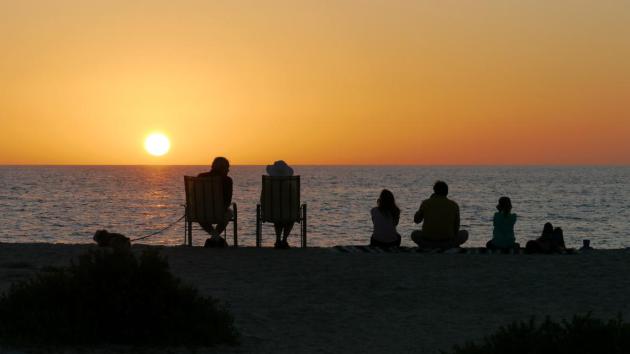
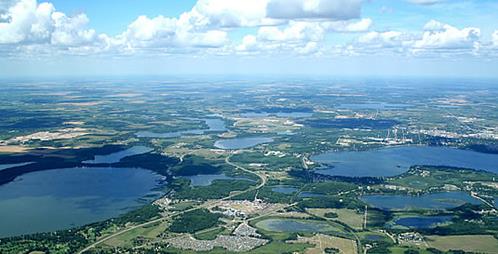

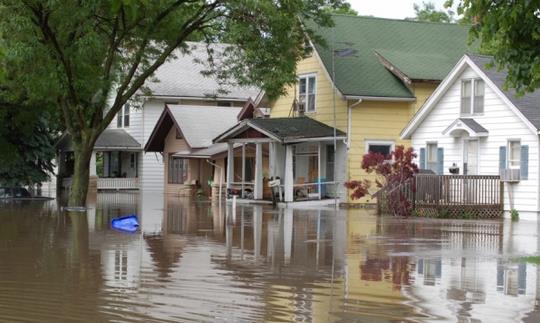
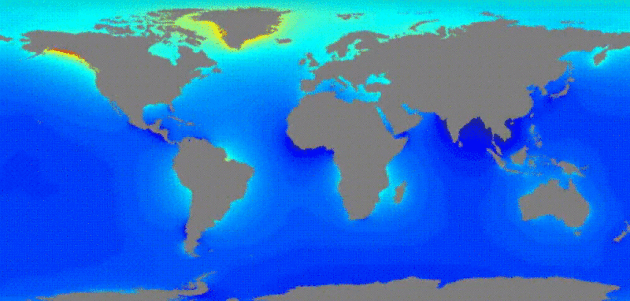
No comments:
Post a Comment